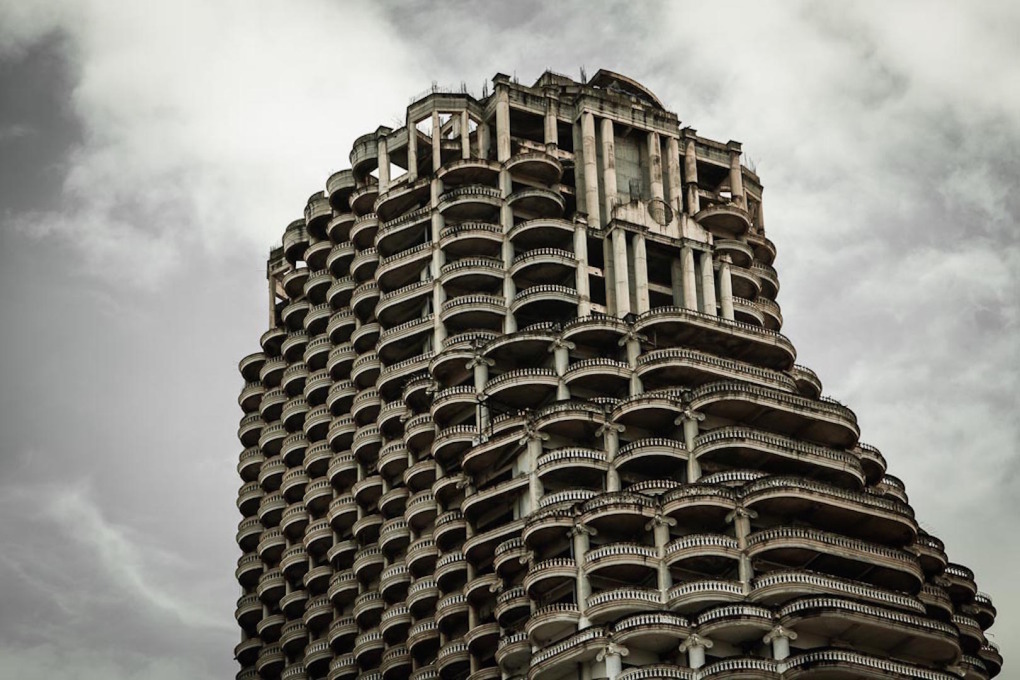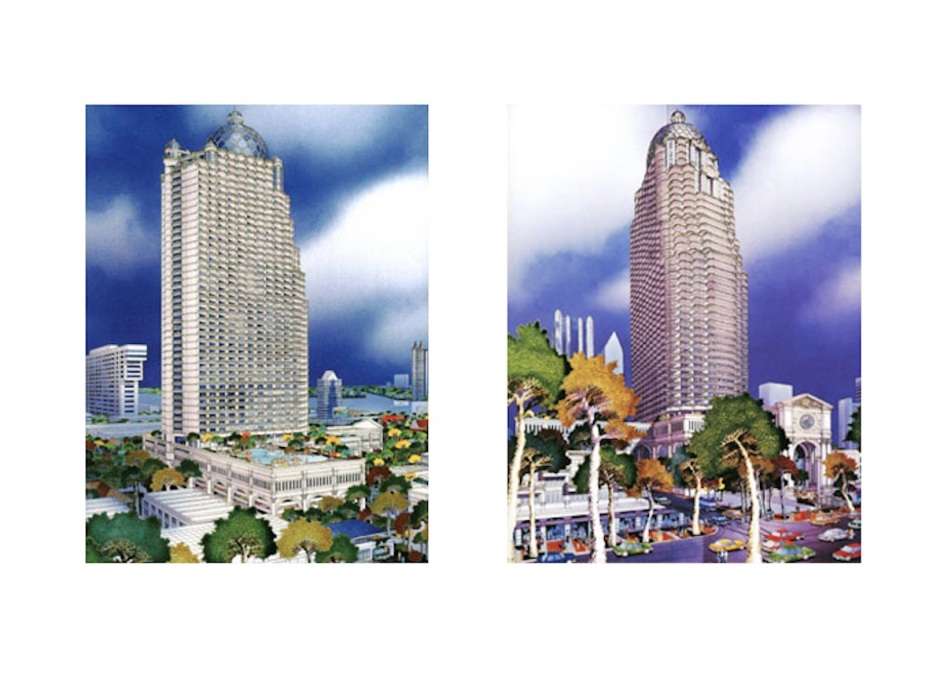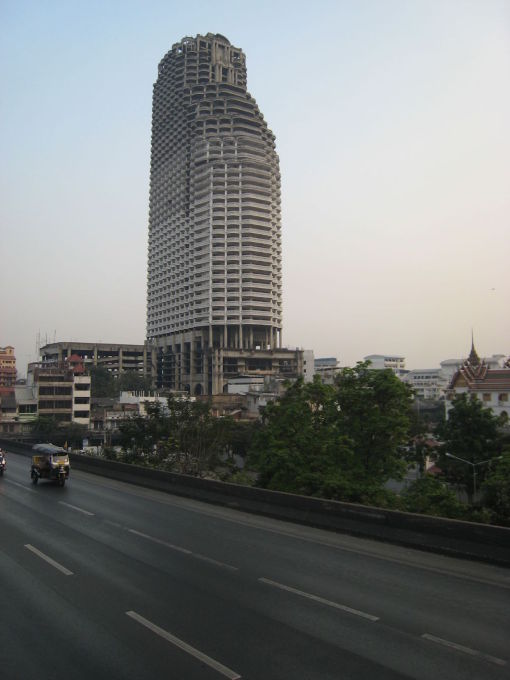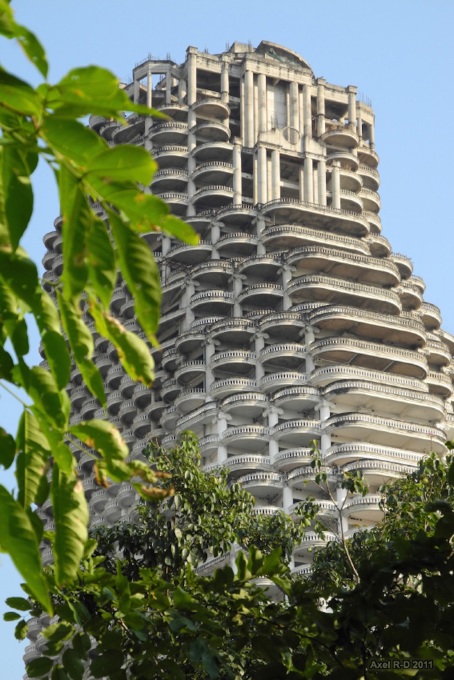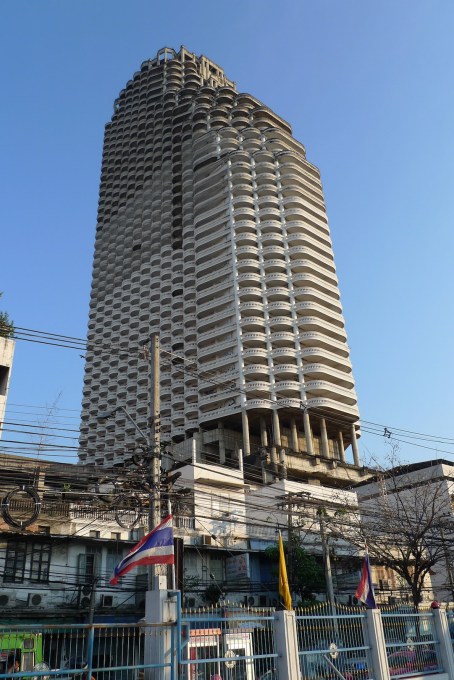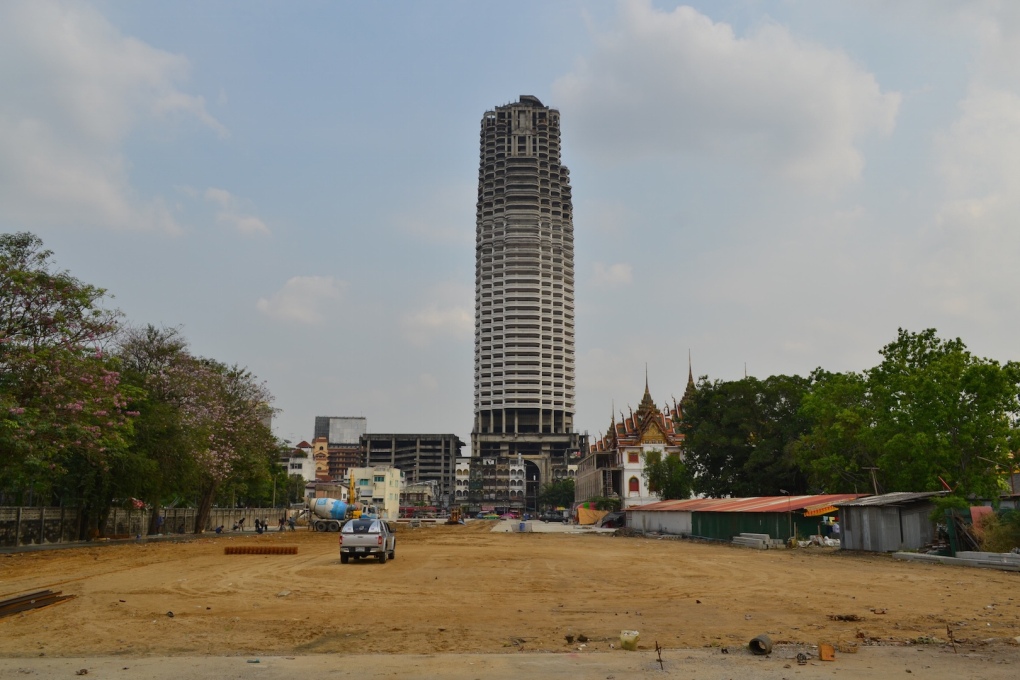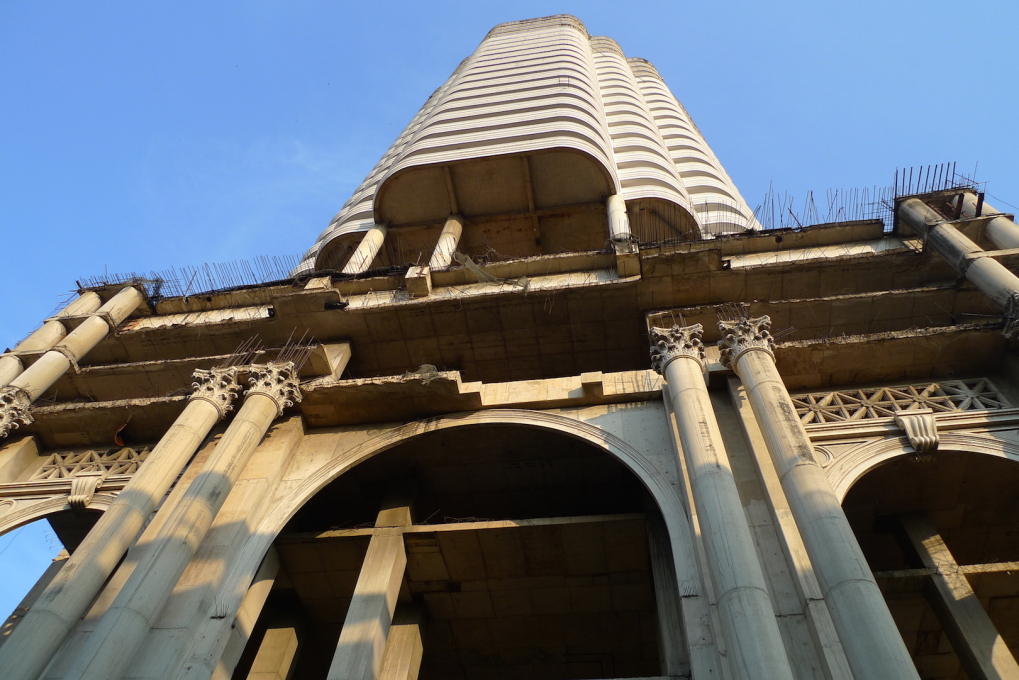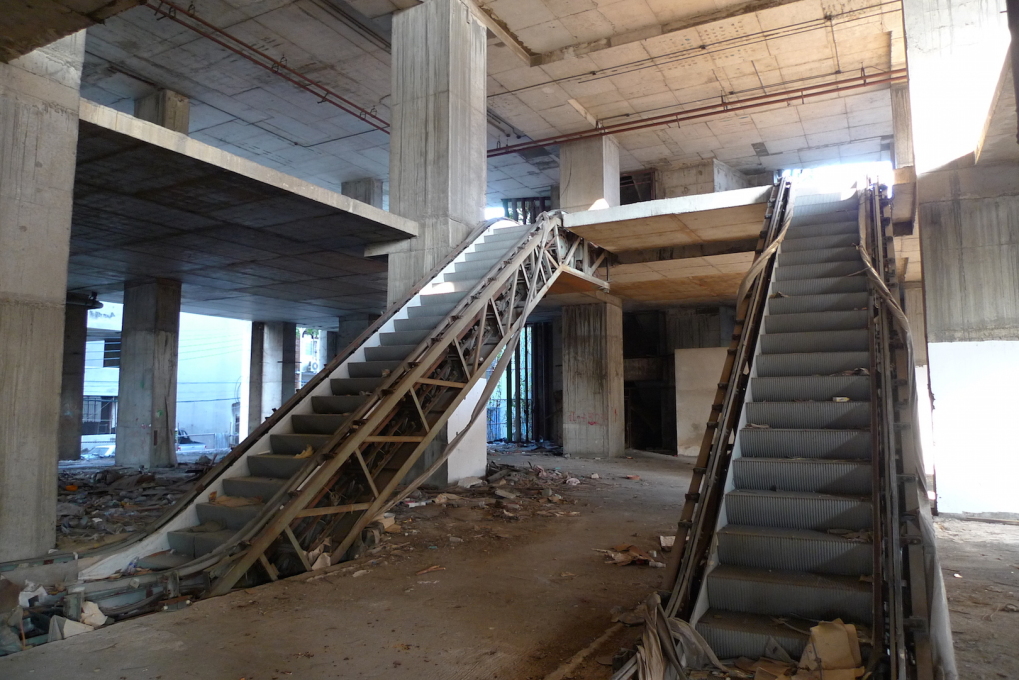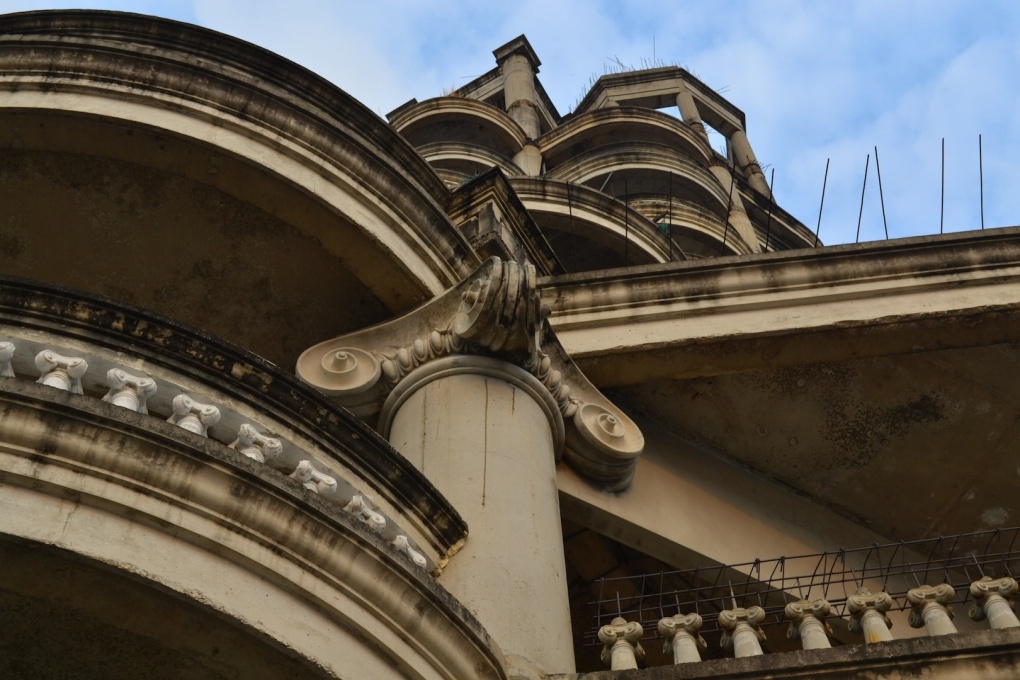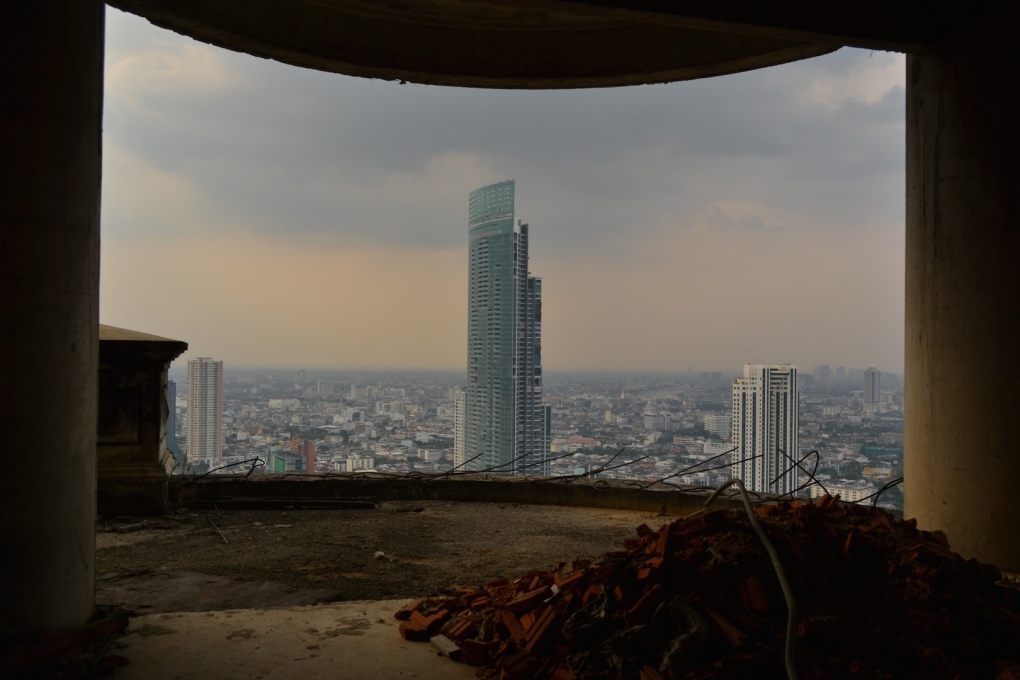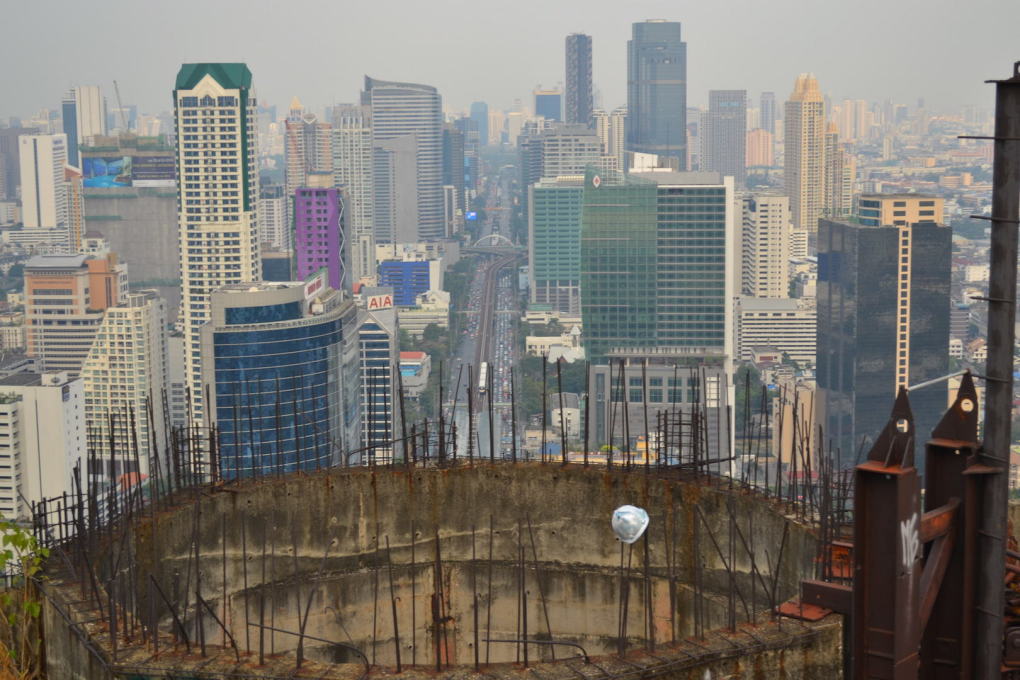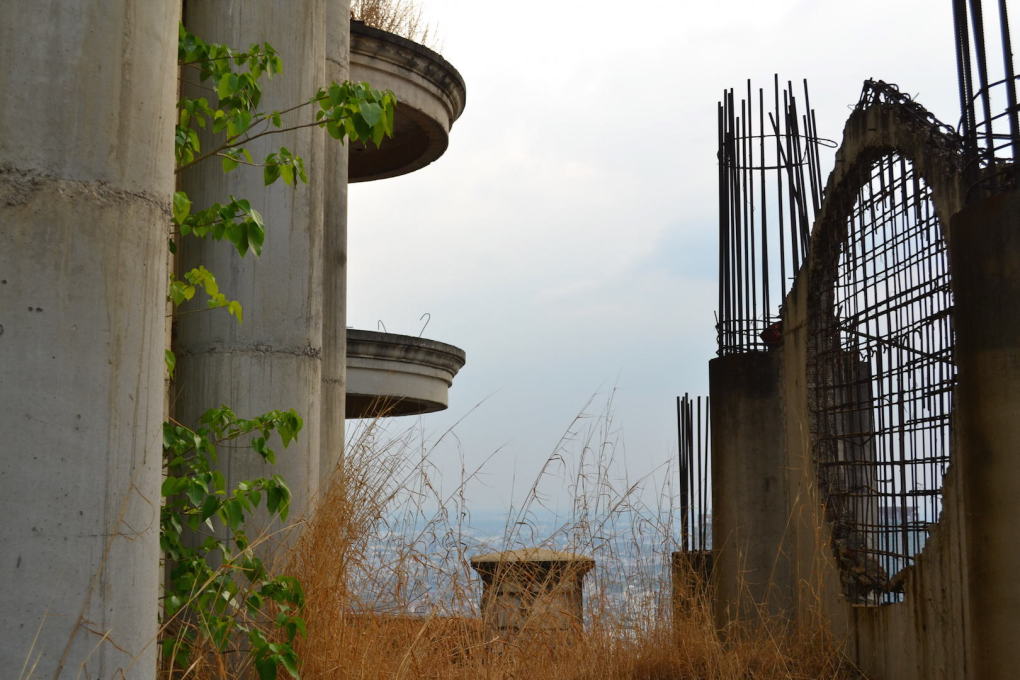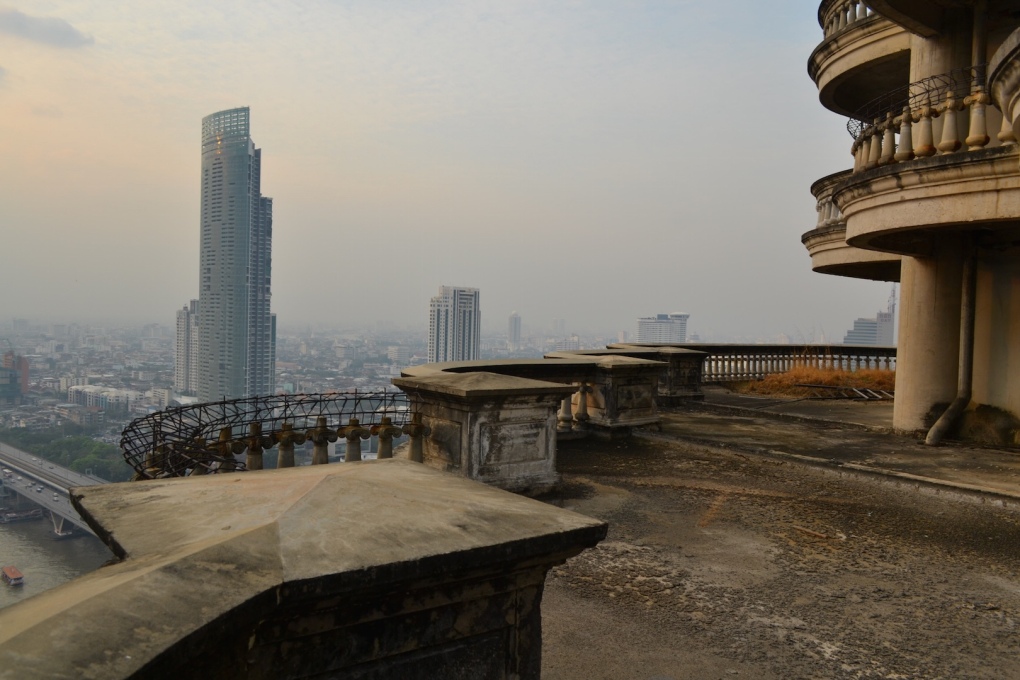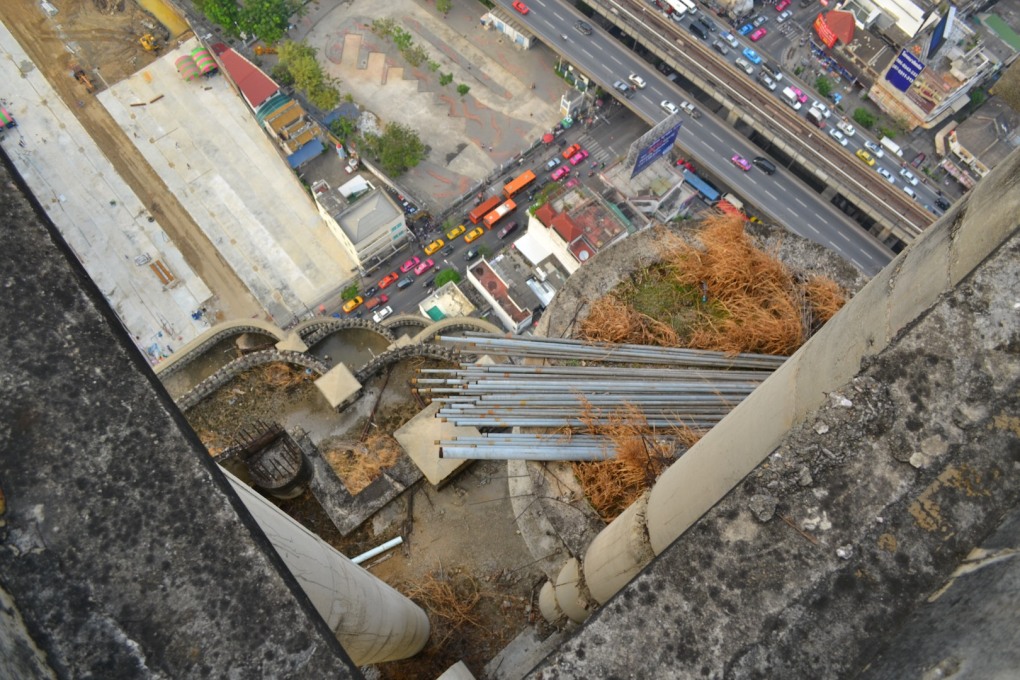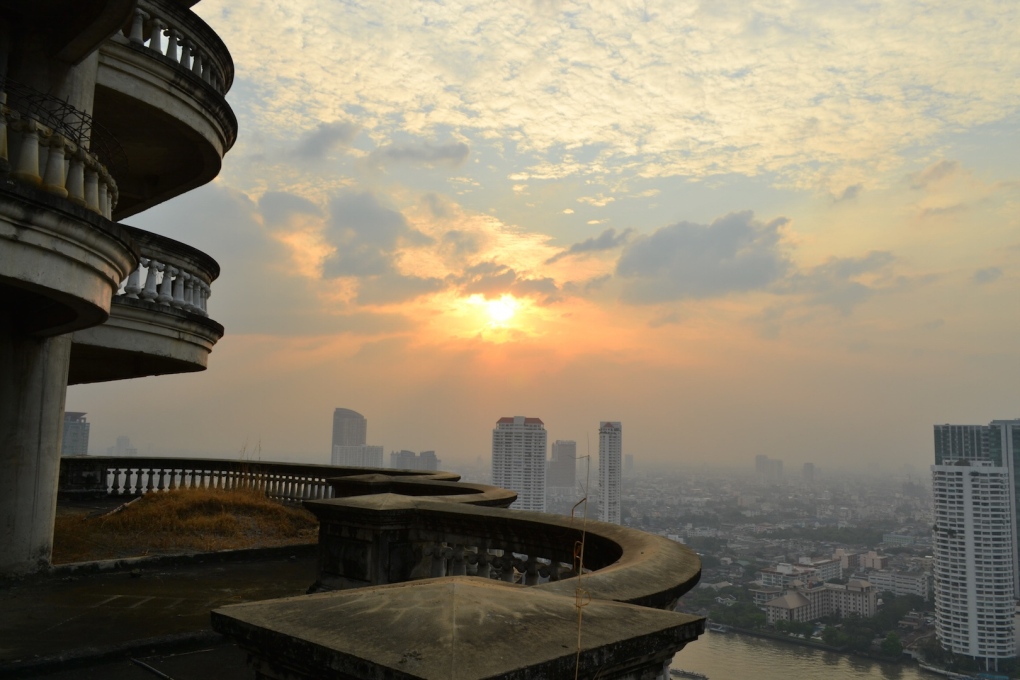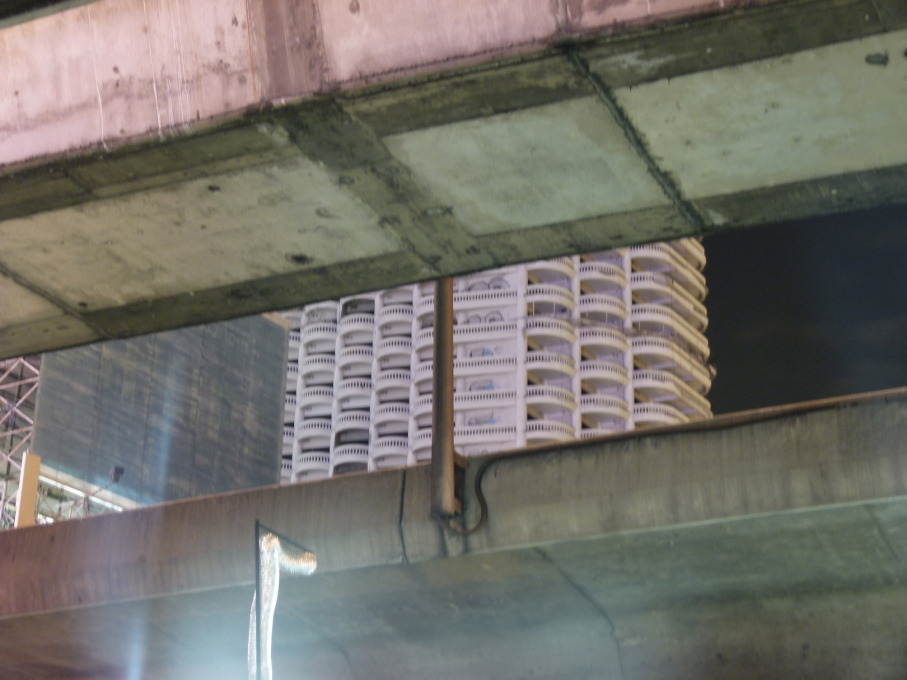In downtown Bangkok, the empty shell of an abandoned 49-storey building has sat rotting for over 17 years, derelict and allegedly haunted. Leigh Theodore Vlassis visited the lofty carcass of the Sathorn Unique Tower which is both a symptom of local boom and bust urban development and an unlikely new symbol for the city as a major “ruin porn” tourist attraction, having a galvanising effect on its surrounding neighbourhood.
In a city famed for its promiscuous nightlife and vivid culture, Bangkok’s urban fabric exhibits extremes of contrast. Tall skyscrapers are juxtaposed with four storey traditional vernacular townhouses, international coffee chains and luxury shops vie with pristine Thai temples, and all the streets are criss-crossed and strung together by kilometres of low-slung suspended power lines, often obscenely dangerous, as they twist their way into every nook and cranny. With such an amalgamation of jarring differences, Bangkok is initially experienced as a sensory overload.
It is in part due to its all-year-round warm climate that Bangkok has developed its reputation as a partying metropolis, one which has seen hordes of young backpackers coming from all over the globe to its packed out clubbing and pubbing doorsteps. These are places where you can drink two litres of alcohol (literally) out of a bucket, for the same price as a butter pretzel in Germany. But this influx is only the latest chapter in the history of a city that has constantly undergone major change, both culturally and physically, since its foundation on the eastern bank of the Chao Phraya River in the late eighteenth century.
Upon their completion in 1785, it was the golden spires of the Grand Palace and Royal temples, standing out prominently on the city skyline, that first gave Bangkok its aesthetic grandeur. But by the mid-nineteenth century, the city was beginning to exhibit Western influences, as missionaries and merchants brought with them new ideas, technical innovations and money, leading to the modernisation of the city and its urban landscape.
Subsequently the first half of the twentieth century would see the extremes of Japanese occupation and later Allied bombing during World War II, followed by post-war reconstruction and then rapid growth, resulting from international aid and government-sponsored investment. Multitudes of new developments sprung up all over the city, from large-scale shopping malls to luxury high-rise condominiums, as both city and country profited for years from a stable currency and positive economic outlook.
In particular, Thailand had an economic boom between 1985 and 1996, when for eleven solid years its economy grew at an average of nine percent per year, the highest growth rate of any country at the time. One of the most prominent new buildings commissioned in that period, was the Sathorn Unique Tower, a monstrous 49-storey construction, located in Bangkok’s international business district of Sathorn in Yan Nawa. The tower was designed and developed by one of Thailand’s leading architecture firms, Rangsan And Pansit Architecture Co Ltd. When construction started in 1990, the Sathorn Unique was the firm’s first residential project and earmarked to be one of Bangkok’s most luxurious towers with a total of 659 residential and 54 retail units offering panoramic views across the Chao Praya river. However, in 1997, as the building was being topped out and with the internal fit-out already underway, a major economic crisis hit Thailand hard and the currency, the Thai Baht, collapsed, leaving the developers no choice but to cease construction immediately.
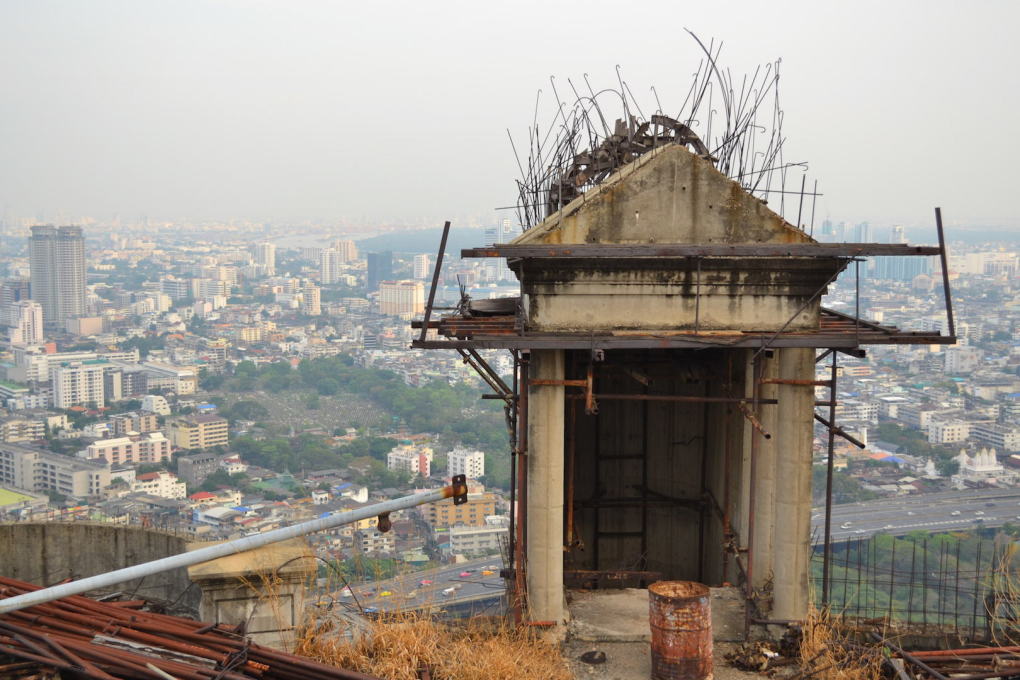
And so it has remained – abandoned – ever since. The hoped-for day when new investors would bring the project back to life never having come. The unfinished shell of the luxury condominium has been left to sweat in the humid climate, falling more into ruin every year. Which is strange, considering that Bangkok is now booming again and the area where the tower stands is a prime location in the city, attracting high profile investors and hoteliers. Just down the road is the luxury hotel the Shangri-La, part of an international chain, and it's only 200 metres from the BTS public train station, connecting it to all inner city Bangkok. So why does the Sathorn Unique remain empty and decaying? Allegedly the building is still owned by the son of one of the architects, Doctor Rangsan, who, rumour has it, has offered it for sale at 1.8 billion Baht (USD 60 Million). But still the tower remains empty. Locals in the area claim that the building is haunted and fated to remain unfinished. Nevertheless it has found a use of some kind: although derelict, the Sathorn Unique has ironically garnered far more attention than if it had ever actually been completed, becoming one of Bangkok’s most popular tourist attractions, attracting locals and people from across the globe alike, all wanting to climb its 49 storeys to the top.
Interestingly, newer constructions in the area have taken their architectural cues from the Sathorn Unique’s original design. Elements such as the grand entrance, with its imposing storey high Corinthian columns, and the rooftop semicircular dome have been copied and integrated into other more recent buildings in the area. It’s as if the presence of the building is valued and gives this area of the city an identity, while its actual fabric remains unvalued, not worthy of the investment to rectify and revive it. This is a perfect example of how urban development is initiated and carried out in Bangkok. Instead of acknowledging and learning from past developmental mistakes, trying to fix them and create a future masterplan where projects are supported by the government for the benefit of the whole city and its people, it seems that the practice in Bangkok is simply to reject what went wrong and to start anew – the singluar driving force being investors and their profits. The Sathorn Unique may be the most notorious, but it is only one of hundreds of abandoned buildings throughout Bangkok. They seem to symbolise an ever-occurring vicious cycle of boom and bust in this tumultuous city.
– Leigh Theodore Vlassis is a Berlin-based freelance writer on architecture, landscape and the built environment. He is currently researching his architecture diploma thesis on the “Urban Palimpsest”.




